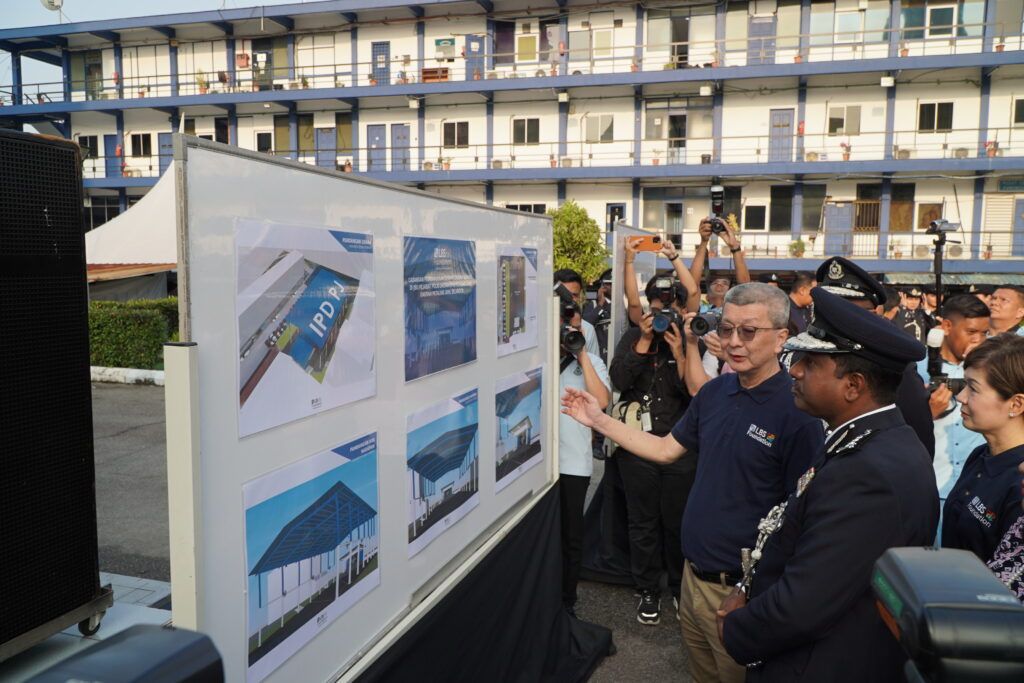Mannju
on
April 5, 2024
Date: 09.04.2024
Media: The Edge
Tan Sri Ir. (Dr.) Lim Hock San, Group Executive Chairman of LBS, recently engaged in an interview with The Edge, where he discussed strategies for achieving success as a prominent businessman in Malaysia with established operations. Additionally, Tan Sri elaborated on his extensive connections with China during the interview

Date: 27.04.2024
ASTRO : AWANI & AEC
At the LBS Fabulous Extra 2022-23 Grand Finale held at Kita Cybersouth Sales Gallery, Tan Sri Ir. (Dr.) Lim Hock San, Group Executive Chairman of LBS, emphasised our dedication to rewarding customers for their ongoing support.
Exclusive insights into upcoming project plans were also shared during interviews with Astro AEC and Astro Awani.


Mannju
on
April 5, 2024
Bukan Raya beshe-beshe, Raya Bling Bling gitu. Lihat gelagat Dom, seorang influencer yang berada di perantauan dan ibunya yang mencuit hati menanti Bling Bling istimewa sempena ketibaan Syawal.
Saksikan Video Raya Bling Bling istimewa dibawakan oleh LBS Bina Group. Semoga Sambutan Aidilfitri kali ini penuh ceria dengan kilauan Bling Bling!
Selamat Hari Raya Aidilfitri Maaf Zahir Batin buat semua muslimin dan muslimat.
Nak dapatkan tawaran hebat dan menang pelbagai hadiah menarik? Sila layari: http://campaign.lbs.com.my
Mannju
on
April 5, 2024


Tan Sri Ir (Dr.) Lim Hock San, the Group Executive Chairman of LBS Bina Group and LBS Foundation board of trustees, alongside Dato Cynthia Lim, Board of trustees LBS Foundation, YDH CP Dato’ Hussein Omar Khan, Selangor Police Chief, YBhg Datin Liliyana Haryani Dato’ Mohd Harunizam, Chairman of PERKEP Selangor, YDH DCP Dato’ Sasikala Devi Subramaniam, Selangor Deputy Police Chief, YDH ACP Mohamad Fakhrudin Abdul Hamid, Petaling Jaya District Police Chief, YBhg Pn Roshimah Chik, at the Dewan Jaya LBS ground breaking ceremony, IPD Petaling Jaya.
This event was fully sponsored by LBS Foundation, the corporate social responsibility arm of LBS Bina Group Berhad that aims to enhance facilities for the local police force and foster community engagement.
Mannju
on
April 5, 2024

Tan Sri Ir (Dr.) Lim Hock San, Group Executive Chairman of LBS and MGB Berhad alongside the esteemed board of directors and senior management, with over 860 employees has concluded annual Town Hall Meeting under the central theme of ‘Celebrating Diversity and Strengthening Unity’ on 6th February 2024. As a platform to strengthen the bond between staff and management, the meeting also highlighted the challenges and achievements for 2023.
Mannju
on
February 6, 2024
Relive the joy and splendor of LBS Bina Group Berhad’s “Majlis Menjunjung Kasih dan Rumah Terbuka” in celebration of Chinese New Year 2024!
Watch highlights from the event held on the 24th Jan at Shangri-la Hotel, graced by YDP Agong Al-Sultan Abdullah and Raja Permaisuri Agong Tunku Azizah.
#LBSBinaGroup #CNY2024
Mannju
on
February 6, 2024
Media Briefing 2024 Event Highlight
Our Annual Media Briefing is making a comeback, and this time, we are thrilled to host it at the LBS Headquarters!
With over 100 media partners present, join us as Tan Sri Ir. (Dr.) Lim Hock San recaps the performance of 2023 and provides a preview of what awaits us in 2024.
Facebook: https://bit.ly/LBSBina_Facebook
Instagram: https://bit.ly/InstagramLBSBina
Twitter: https://bit.ly/twitterLBSBina
Linkedin: https://bit.ly/LinkedInLBSBina
Visit our website here: https://bit.ly/WebsiteLBSBina
Do drop some comments on your thoughts and maybe some interesting topics we can look into!
Mannju
on
February 5, 2024

Tan Sri Ir. (Dr.) Lim Hock San, Group Executive Chairman of LBS and MGB alongside the esteemed board of directors and senior management, Dato’ Beh Hang Kong, Dato’ Abdul Majit, Isaac Lim, Datuk Richard Lim, Dato’ Lim Han Boon, Dato’ Sri Barry Lim, Dato’ Sri Daniel Lim, Puan Sri Karen Wang, Datuk Wira Joey Lim, Dato’ Cynthia Lim, Pn Nor Salinun, Pn Noor Fansyurina, Pn Nadhirah and Lucas Lim (from left).

Tan Sri Ir. (Dr.) Lim Hock San accompanied by Puan Sri, officiates LBS 2024 Chinese New Year Dinner featuring cultural lion dance and drum performance. The special evening was dedicated to all of LBS reputable business and media associates in honor of their continuous support.

Tan Sri Ir. (Dr.) Lim Hock San alongside the board of directors during the Yee Sang tossing session, bringing prosperity and great fortune for the year of 2024.


